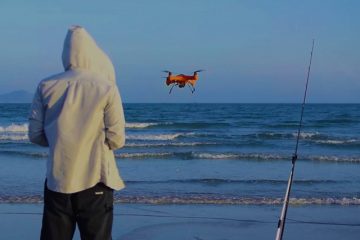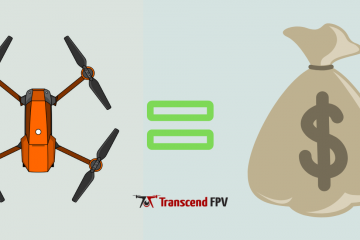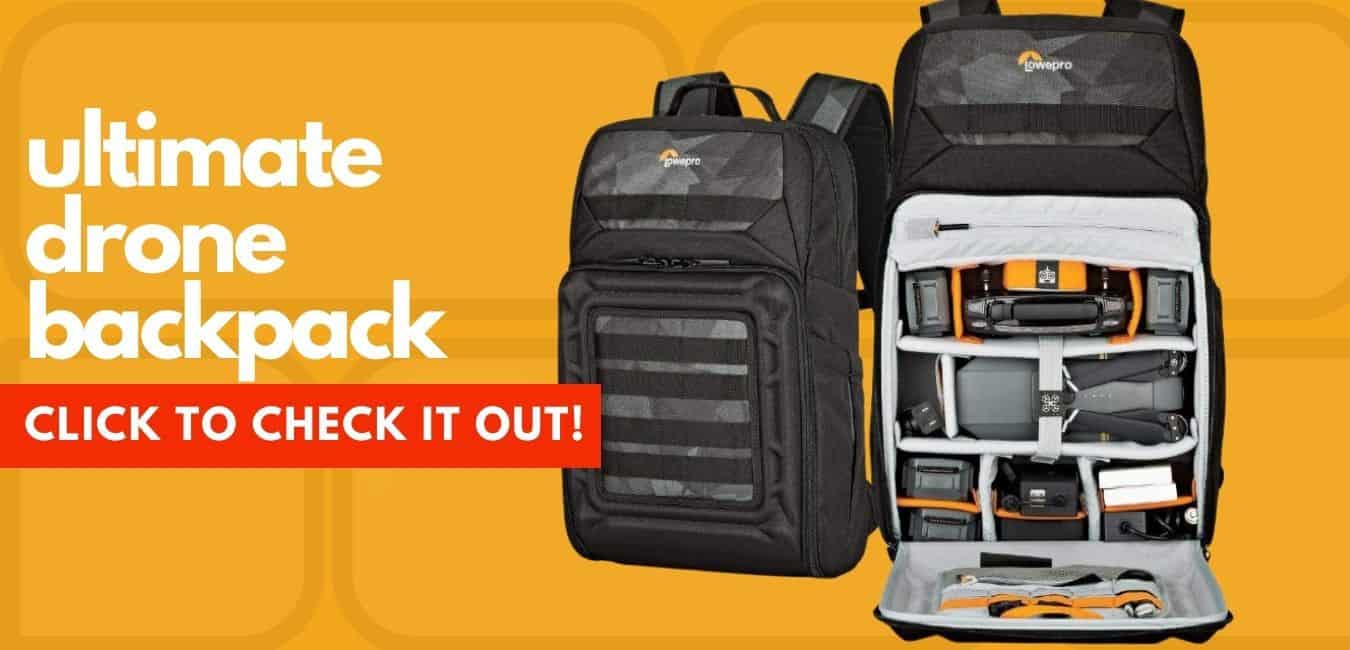How to Transport a Drone [100% Legally and Damage Free]
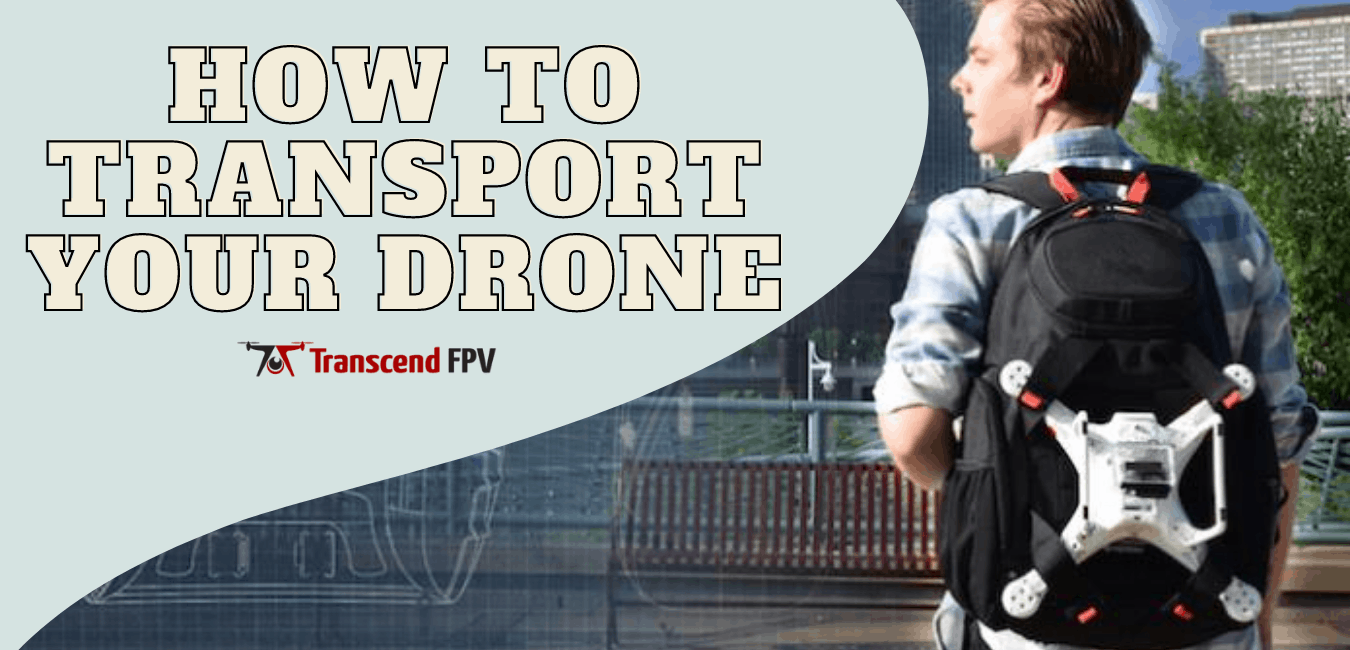
TranscendFPV is a reader supported product and review site. Clicking on links to learn more, or buy products, may earn us money, and support our work. Learn more about the history of TranscendFPV and our passion on our About page.
So my wife and I were packing for our big trip to Jackson Hole and she mentioned taking my drone to get some awesome footage of town and surrounding wildlife. Great idea! But I had no idea how to transport a drone and the last thing I wanted was to get flagged going through security so I did some research.
There are two main aspects to transporting a drone: safety and legality. Keep your drone safe and damage free by packing it in a drone specific protection bag and always taking it as carry on luggage. Stay legal with the FAA and the respective airline by following their policies on drones and lithium ion batteries. These policies vary by airline but typically allow you to carry on spare batteries rated at less than 100 watt hours.
[sc name=”aff-snippet” ]
Quick Links
How to transport a drone safely and damage free?
Transporting a drone for the first time can be nerve racking. Not only are you concerned that your high dollar drone won’t survive long distance travel, you are also dreading taking it through security.
No one wants to end up in a side room for “questioning”!
So let’s address these concerns one by one and you’ll be confident in your travels knowing how to transport a drone safely and damage free.
When it comes to keeping your drone safe, there are two absolute musts:
- ALWAYS carry on your drone. Never put your drone in your checked baggage
- Use a case or backpack specifically designed for transporting a drone
Whatever you do, please, for the love, do NOT put your drone in your checked baggage. Anyone who has watched how checked bags get handled should understand why.
From the person at check-in tossing your bags haphazardly onto the baggage carousel to them slinging them on the back of cart to be taken to the plane to your bag finally flying down a ramp at baggage claim, your checked bags go through hell.
This might be OK for your clothes and toothbrush but I would not be putting expensive electronics in a checked bag and just a heads up, marking your bag with a “fragile” tag doesn’t exempt it from the same abuse every other bag receives.
And with airline restrictions on lithium ion batteries in checked luggage which we’ll discuss later, it just makes things easier and safer to carry on your drone.
Don’t just stuff your drone into the top of your backpack though. You’ll find out that battery storage has certain restrictions too so you are better off having a dedicated drone backpack for keeping your drone safe and keeping you legal.
Best drone backpack for transporting your drone
Drone backpacks come in a wide range of budgets. The cheap ones tend to fall apart quickly with broken zippers and tears. The expensive ones are just overkill most of the time.
The mid range drone backpacks tend to offer the best combination of durability and cost savings. The backpack I recommend for transporting a drone is the Lowepro DroneGuard BP250
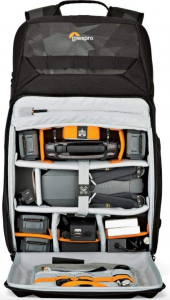
Not only does it have room for your drone and flexible dividers for carrying up to 5 extra batteries, but it also has sleeves for your laptop and a tablet.
The DroneGuard BP250 has compression-molded shell that is super lightweight but also protects your drone, laptop and all accessories from the bumps and bruises that a backpack endures on a long trip.
Your drone is expensive and there is no worse feeling than being hundreds of miles away from home with a broken drone. This backpack is by far the best bang for your buck when it comes to transporting your drone!
How to transport a drone legally?
So now you know how to safely transport your drone but how do you travel with a drone legally?
Surprisingly (at least it was a surprise for me), traveling with a drone is not so much the issue. Traveling with lithium ion batteries is where you need to know the laws and the policies of your particular airline.
I will break down the FAA regulations around lithium ion batteries as well as some of the specific policies of the most popular airlines in the United States, but first you need to make sure that drones are legal where you are going.
It may seem obvious but different countries have different laws when it comes to drones. Even in the United States, different states may have different laws.
Make sure you do thorough research about the legality of drones where you are traveling. There are some countries where they are banned altogether.
A quick google search of “[insert state or country] drone laws” should return you with all the information you need to know because it does no good knowing how to transport a drone safely and legally if you aren’t legally allowed to fly your drone when you get there.
Can you take a drone on a plane?
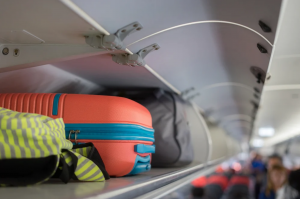
Absolutely! Taking a drone on a plane is as easy as taking a laptop or other electronic device.
The restrictions are more about the lithium ion batteries than the drone itself. The FAA has its restrictions while the different airlines have their own policies regarding traveling with lithium ion batteries.
According to the FAA (Federal Aviation Administration), spare batteries must be carried in carry-on baggage only. If you bag is gate checked, you will have to remove the batteries and take them with you on the plane.
Lithium batteries are limited to 100 watt hours per battery. With prior airline approval, you may be allowed to carry up to two larger batteries rated between 101-160 watt hours.
What is a watt hour? It is just a way to measure batteries. Newer lithium ion batteries will have the watt hours marked and labeled with Wh.
If your batteries are not marked with a Wh rating, you can easily calculate the watt hours by multiplying the battery voltage by the amp hours.
Watt hours (Wh) = Battery voltage (V) X Amp hours (Ah)
There is no restriction from the FAA in regards to the number of batteries under 100Wh that you can take although some airlines do have restrictions.
All battery terminals must be protected from short circuit. You can cover your battery terminals in tape, put them in a lithium ion battery bag or keep them in special battery sleeves like those inside the DroneGuard BP250.
Damaged or recalled batteries are also not allowed on flights even in your carry on so make sure you keep your batteries in good shape.
If you live outside of the United States, make sure to check your country’s federal regulations around transporting a drone and lithium ion batteries on a plane.
Here’s a quick summary:
- Spare batteries must be carried in carry on luggage
- Batteries are limited to 100 watt hours
- With airline approval, you can take up to two larger batteries rated between 101 and 160 watt hours.
- There are no quantity limits on batteries per the FAA but each airline may have further restrictions
- All battery terminals must be protected from short circuit
- Damaged or recalled batteries are prohibited
Now that we know what the FAA rules are on how to transport a drone and its batteries legally, we need to make sure we are in compliance with our particular airline’s policy.
For the most up to date FAA regulations, click here.
Can you take a drone on Southwest Airlines?
Southwest allows you to bring spare batteries in carry-on luggage only and you are limited to 20 spare batteries.
They make no mention of properly protecting battery terminals against short circuit but that is covered by FAA regulations.
They also fail to mention battery size in their policy but the FAA regulations around 100Wh still applies.
In addition to the FAA regulations, Southwest’s policy on how to transport a drone and its batteries is as follows:
- Spare batteries must be in carry-on luggage only
- Spare batteries are limited to 20 per person
For the most up to date Southwest policy, click here.
Can you take a drone on Delta Airlines?
According to Delta Airlines policies, you are allowed to bring spare batteries in carry-on luggage only and all battery terminals must be protected against short circuit.
Batteries installed in your drone may be in checked baggage (but please don’t if you want your drone to arrive in one piece), but all spares must be in carry-on and you are limited to 20 spare batteries (only two of which may have a rating of 101-160 watt hours).
Here’s a quick summary of how to transport your drone legally on Delta:
- Spare batteries in carry-on luggage only
- Batteries are limited to 160 watt hours
- Passenger is allowed up to 20 spare batteries (only two can be be between 101-160 watt hours)
So, Delta’s policy regarding transporting a drone is almost identical to the FAA regulations, but unlike the FAA, Delta does restrict the number of spare batteries to 20.
For the most up to date policy, click here.
Can you take a drone on American Airlines?
For transporting a drone on American Airlines, you must carry all spare lithium ion batteries in carry-on luggage only and all battery terminals must be protected from short circuit.
Each passenger is limited to only two spare batteries up to 160 watt hours, so pay attention when you are packing your drone backpack because you can only take two batteries.
So for American Airlines:
- Batteries must be in your carry-on luggage
- All battery terminals must be protected from short circuit
- Each passenger is limited to two spare batteries
For the most up to date American Airlines policy, click here.
Can you take a drone on United Airlines?
United Airlines’ policy on transporting a drone and its batteries pretty much echos what the FAA says. They make no indication of a limit to the number of spare batteries you can travel with apart from the FAA mandated limit of 2 batteries in the 101 to 160 watt hour range.
So if you are flying United Airlines:
- Loose batteries must be in your carry-on luggage
- All battery terminals must be protected
For the most up to date policy from United Airlines, click here.
Can you take a drone on JetBlue?
JetBlue allows for storing your drone with a battery installed in your checked baggage but any loose or spare batteries must be in your carry-on luggage.
They also follow the FAA mandate to have all battery terminals properly protected whether that means the original packaging, insulated wraps, tape or battery sleeves.
Once again, all the FAA regulations apply even if JetBlue forgets to mention them, but they don’t seem to have a restriction on the number of spare batteries you can take with you.
To transport a drone on JetBlue, you must:
- Carry all spare batteries in carry-on luggage only
- Protect your battery terminals for short circuit.
For the most up to date JetBlue policies, click here.
Can you take a drone on Alaska Airlines?
Alaska Airlines is one of the few airlines that specifically calls out transporting a drone in their policies.
Their restrictions on lithium ion batteries pretty much echos the FAA, but they do not allow you to have your drone in your checked luggage if the batter is still installed. All batteries must be in carry-on luggage only.
All other regulations around traveling with lithium ion batteries on Alaska Airlines follow the FAA guidelines and there is no explicit restriction to the number of spare batteries that you can have with you.
So for how to transport a drone and batteries on Alaska Airlines:
- Drones can be in checked luggage WITHOUT batteries installed
- All spare batteries must be in carry on luggage only
- All battery terminals must be protected from short circuit
For the most up to date policies from Alaska Airlines, click here.
What about other airlines not listed above?
If I didn’t cover your specific airline above, you can easily find each airline’s policy around drones and lithium ion batteries with a quick Google search, “lithium ion batteries [insert airline name]”
If you are having trouble understanding the policy or if you have further questions, contact your airline directly to make sure you are completely in compliance when you arrive for your flight.
Conclusion
So as you can see once you know how to transport a drone legally and you have the right backpack to carry it all, it is super easy. Drone technology is still relatively new and policies are being changed every year to adjust to the new technology so just to be safe, make sure you check the FAA policy and airline policy every time before transporting your drone.
- Flexible dividers securely house DJI Mavic Pro, transmitter, up to 5 extra batteries, 15 laptop and 10 tablet with additional space for Osmo and 2 Go Pros or mirrorless kit plus personal items
- Targeted lightweight protection - Compression-molded Form Shell technology protects gear from impact without added weight or bulk
- Cradle Fit pocket suspends and protects 15 laptop and up to 10 tablet
- Removable organization panel with elastic straps keeps fragile parts and charging cords secure in the case or on the go

